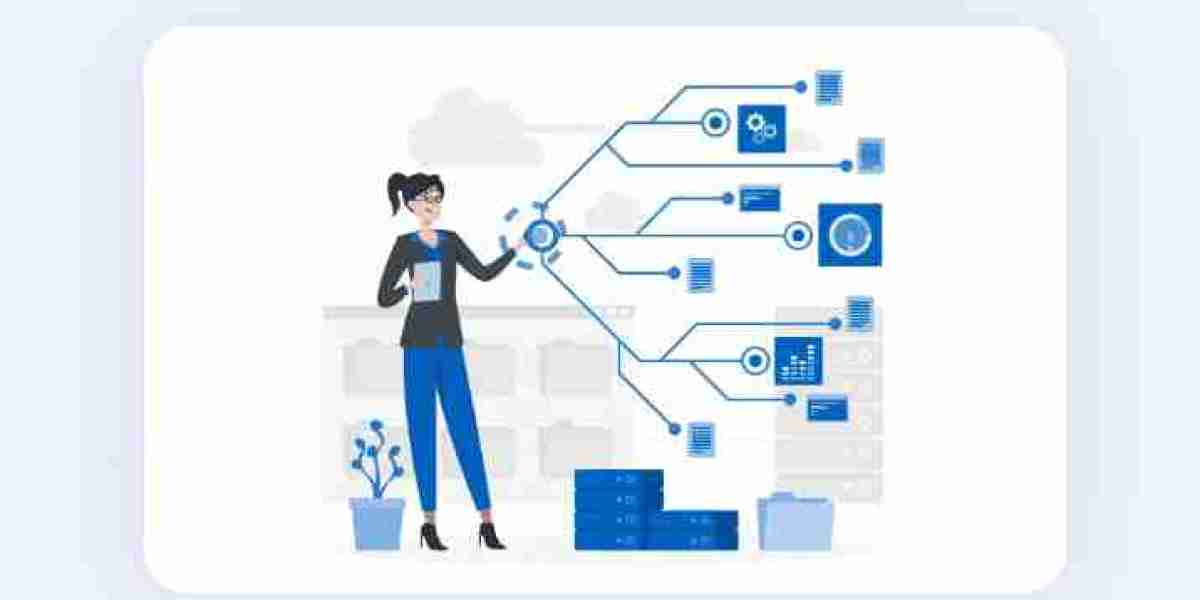Introduction
In today's technology-driven world, software product development is a critical component for businesses aiming to innovate, compete, and succeed. The process of turning an idea into a fully functioning software product involves multiple stages, each crucial to ensuring the final product meets user expectations and achieves business goals. This comprehensive guide will explore the key aspects of software product development, including methodologies, best practices, and emerging trends. By understanding these elements, businesses can effectively navigate the complexities of development and create products that stand out in a crowded market.
1. The Software Development Lifecycle (SDLC)
The Software Development Lifecycle (SDLC) is a systematic process used to develop software applications. It encompasses several phases, each with specific objectives and deliverables.
1.1 Planning and Feasibility
The planning phase is the foundation of any software development project. It involves defining the project's scope, objectives, and feasibility.
Project Scope: Clearly define what the software will achieve, including its features, functionalities, and limitations. Engage stakeholders to gather their needs and expectations, ensuring alignment with business goals.
Feasibility Study: Assess the technical, financial, and operational feasibility of the project. This includes evaluating technology stacks, estimating costs, and identifying resource requirements. Conduct a risk assessment to identify potential challenges and develop mitigation strategies.
Project Charter: Create a project charter outlining the project's objectives, scope, timeline, budget, and key stakeholders. This document serves as a reference throughout the development process and helps manage expectations.
1.2 Requirements Gathering and Analysis
Gathering and analyzing requirements is crucial to understanding what the software needs to accomplish.
Stakeholder Interviews: Conduct interviews with key stakeholders, including end-users, business leaders, and subject matter experts. Collect their input to understand their needs and expectations.
Requirement Documentation: Document both functional and non-functional requirements. Functional requirements describe what the software should do, while non-functional requirements address performance, security, and usability.
Requirements Validation: Validate requirements with stakeholders to ensure accuracy and completeness. This step helps avoid misunderstandings and ensures the software meets user needs.
1.3 Design
The design phase translates requirements into a blueprint for development.
Architectural Design: Define the software’s architecture, including its components, data flow, and interactions. Create architectural diagrams to illustrate the system’s structure and integration points.
UI/UX Design: Design the user interface (UI) and user experience (UX) to ensure the software is intuitive and user-friendly. Develop wireframes, prototypes, and design mockups to visualize user interactions and layout.
Design Review: Review the design with stakeholders to ensure alignment with requirements and expectations. Incorporate feedback and make necessary revisions to refine the design.
1.4 Development
The development phase is where coding and implementation occur.
Coding: Write the code based on design documents. Implement features, functionalities, and integrations according to the specifications.
Version Control: Use version control systems (e.g., Git) to manage code changes and track different versions of the software. This helps coordinate development efforts and manage changes effectively.
Code Review: Conduct regular code reviews to ensure code quality and adherence to coding standards. Code reviews help identify and address issues early in the development process.
1.5 Testing
Testing ensures the software is free of defects and meets quality standards.
Unit Testing: Test individual components or functions to verify they work as intended. Unit testing helps identify and fix issues at the component level.
Integration Testing: Test how different components interact to ensure the software functions correctly as a whole. Integration testing helps identify issues related to component interactions.
System Testing: Test the entire system to validate it meets specified requirements and performs as expected under various conditions. System testing includes performance, security, and usability testing.
User Acceptance Testing (UAT): Test the software with end-users to ensure it meets their needs and expectations. UAT helps identify any usability issues or gaps in functionality.
1.6 Deployment
Deployment involves releasing the software to users and making it available for use.
Deployment Planning: Develop a deployment plan outlining the steps for releasing the software, including any necessary configurations or preparations.
Release Management: Manage the release process to ensure a smooth transition. This includes preparing release notes, coordinating with stakeholders, and addressing any deployment issues.
Post-Deployment Monitoring: Monitor the software after deployment to identify and address any issues that arise. Track performance, user feedback, and bug reports to ensure ongoing quality and user satisfaction.
1.7 Maintenance and Support
Maintenance and support are ongoing activities to ensure the software remains functional, secure, and up-to-date.
Bug Fixes: Address and fix any bugs or issues reported by users. Regular maintenance helps maintain software quality and user satisfaction.
Updates and Enhancements: Release updates to add new features, improve performance, and address any issues. Regular updates keep the software relevant and competitive.
User Support: Provide support to users through various channels, such as help desks, documentation, and forums. Effective user support helps users resolve issues and make the most of the software.
2. Software Development Methodologies
Choosing the right methodology is essential for managing the development process effectively. Each methodology offers a different approach to organizing and executing development tasks.
2.1 Waterfall Model
The Waterfall model is a traditional approach where each phase of the SDLC is completed sequentially. This model is straightforward and easy to manage but can be inflexible in adapting to changes.
- Pros: Clear structure, easy to manage, and well-suited for projects with well-defined requirements.
- Cons: Difficult to accommodate changes, limited flexibility, and may result in longer development cycles.
2.2 Agile Methodology
Agile methodology emphasizes iterative development, collaboration, and flexibility. It involves breaking the project into smaller tasks or sprints, with regular reviews and adjustments.
- Pros: Flexibility to accommodate changes, faster delivery of features, and enhanced collaboration.
- Cons: Requires close collaboration and frequent communication, may lead to scope creep if not managed carefully.
2.3 Scrum Framework
Scrum is an Agile framework that uses fixed-length sprints to deliver increments of the software. It involves regular meetings, such as daily stand-ups and sprint reviews, to track progress and address issues.
- Pros: Provides a structured approach to Agile, promotes teamwork, and allows for frequent feedback.
- Cons: Requires commitment to Scrum practices, may be challenging to implement in larger teams.
2.4 Kanban
Kanban is another Agile approach that focuses on visualizing work and optimizing flow. It uses a Kanban board to track tasks and manage work in progress.
- Pros: Simple to implement, emphasizes continuous improvement, and allows for flexible work management.
- Cons: May lack structure compared to other methodologies, requires discipline to manage work in progress effectively.
2.5 DevOps
DevOps is a methodology that integrates development and operations to enhance collaboration, automate processes, and accelerate delivery. It emphasizes continuous integration (CI) and continuous delivery (CD).
- Pros: Streamlines development and deployment processes, promotes collaboration, and improves efficiency.
- Cons: Requires cultural changes and investment in automation tools, may be challenging to implement in traditional environments.
3. Best Practices for Software Product Development
Adhering to best practices ensures the success and quality of software products. These practices encompass various aspects of the development process.
3.1 Effective Communication
Clear and effective communication among team members and stakeholders is essential for project success. This includes regular updates, status meetings, and using collaboration tools to facilitate communication.
3.2 Documentation
Comprehensive documentation is crucial for maintaining and evolving software. This includes design documents, code comments, user guides, and release notes. Well-documented projects are easier to understand, modify, and support.
3.3 User-Centered Design
Focusing on the needs and preferences of end users ensures that the software provides a positive user experience. This involves conducting user research, usability testing, and incorporating feedback into the design and development process.
3.4 Quality Assurance
Implementing a robust quality assurance process helps identify and address defects early. This includes using automated testing tools, conducting code reviews, and adhering to coding standards.
3.5 Risk Management
Identifying and managing risks helps mitigate potential issues and ensure project success. This involves assessing risks, developing mitigation strategies, and regularly reviewing and updating risk management plans.
3.6 Continuous Improvement
Embracing a culture of continuous improvement helps refine processes and enhance the product over time. This includes regularly evaluating and iterating on development practices, tools, and technologies.
4. Emerging Trends in Software Product Development
The field of software product development is continuously evolving, with new trends and technologies shaping the future of development.
4.1 Artificial Intelligence (AI) and Machine Learning (ML)
AI and ML are increasingly being integrated into software products to enhance functionality, automate processes, and provide personalized experiences. These technologies enable advanced analytics, natural language processing, and intelligent automation.
- Applications: AI-powered chatbots, recommendation systems, and predictive analytics.
4.2 Cloud Computing
Cloud computing continues to transform software development by providing scalable infrastructure, flexibility, and cost savings. Cloud platforms enable developers to deploy, manage, and scale applications with ease.
- Benefits: On-demand resources, reduced infrastructure costs, and improved scalability.
4.3 DevOps and CI/CD
The adoption of DevOps practices and CI/CD pipelines is accelerating software delivery and improving collaboration between development and operations teams. Automation and continuous integration help streamline workflows and enhance product quality.
- Benefits: Faster release cycles, improved collaboration, and reduced manual effort.
4.4 Low-Code and No-Code Development
Low-code and no-code platforms are revolutionizing software development by allowing users to create applications with minimal coding. These platforms enable faster development, empower non-technical users, and reduce the reliance on traditional coding.
- Applications: Rapid prototyping, citizen development, and simplified application creation.
4.5 Cybersecurity
With the increasing frequency of cyber threats, cybersecurity is a critical consideration in software development. Implementing robust security measures, such as encryption, authentication, and vulnerability assessments, helps protect software from potential attacks.
- Best Practices: Secure coding practices, regular security testing, and adherence to security standards.
5. Conclusion
Software product development is a dynamic and multifaceted process that involves careful planning, execution, and refinement. By understanding the lifecycle, methodologies, best practices, and emerging trends, organizations can navigate the complexities of development and create products that meet user needs and achieve business goals. Whether you are embarking on a new project or refining an existing product, adopting a strategic and informed approach is key to success in the ever-evolving world of software development. Embrace innovation, stay agile, and continuously strive for excellence to thrive in this competitive landscape.



